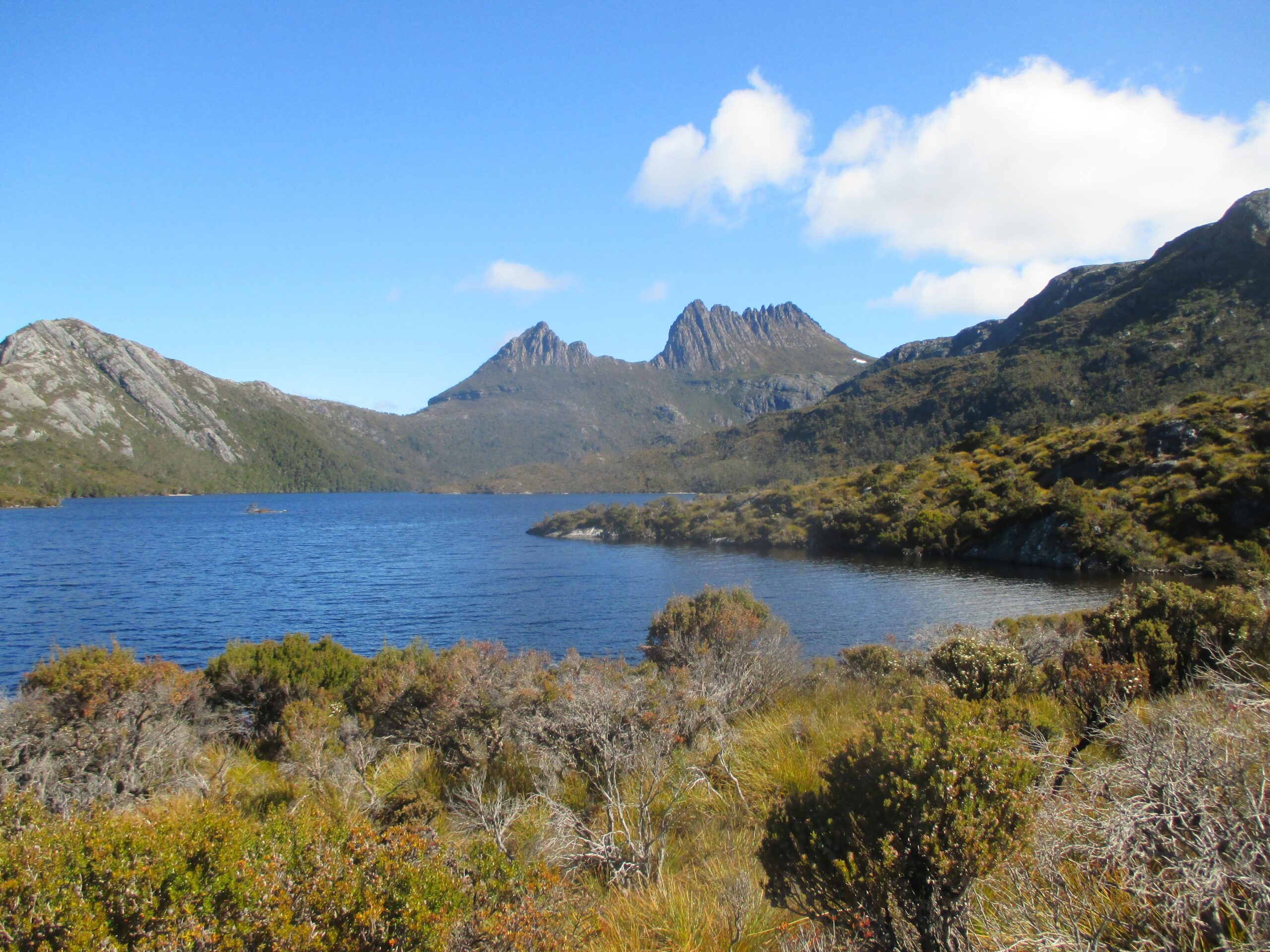Part Two of the Hitchhike
More penguins
I headed south, along the coast from The Bay of Fires, and landed in Bicheno. There, I decided to treat myself to the luxury of a hostel for the night. Bicheno has a long sandy beach with a backdrop of the mountains, almost on par with Kaikoura in New Zealand – one of my favourite places in the world. With the tide out, it was a very wide beach, too. Ideal for an afternoon stroll after extended time standing on the side of the road or sitting in a car.
Bicheno is also home to a colony of penguins; little blue, or ‘fairy’ penguins, which are native to Australia. You can pay for a guided tour, or you can head out by yourself at dusk or dawn. I did the latter, cheaper option. I had to wait awhile before they came in, and sunlight had mostly gone, but I managed to see the tiny penguins traipse up the rocks to their colony from a safe distance.
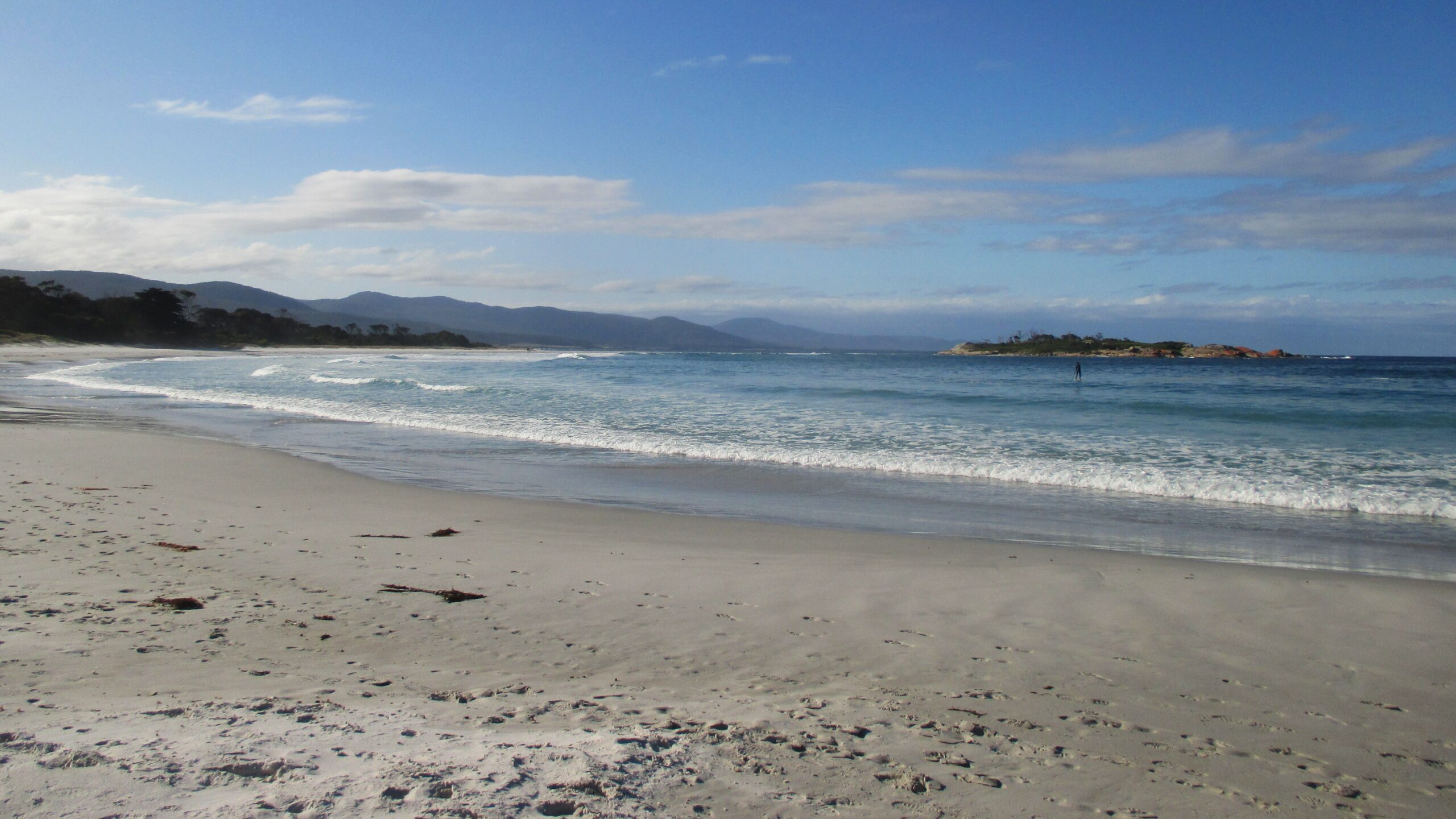
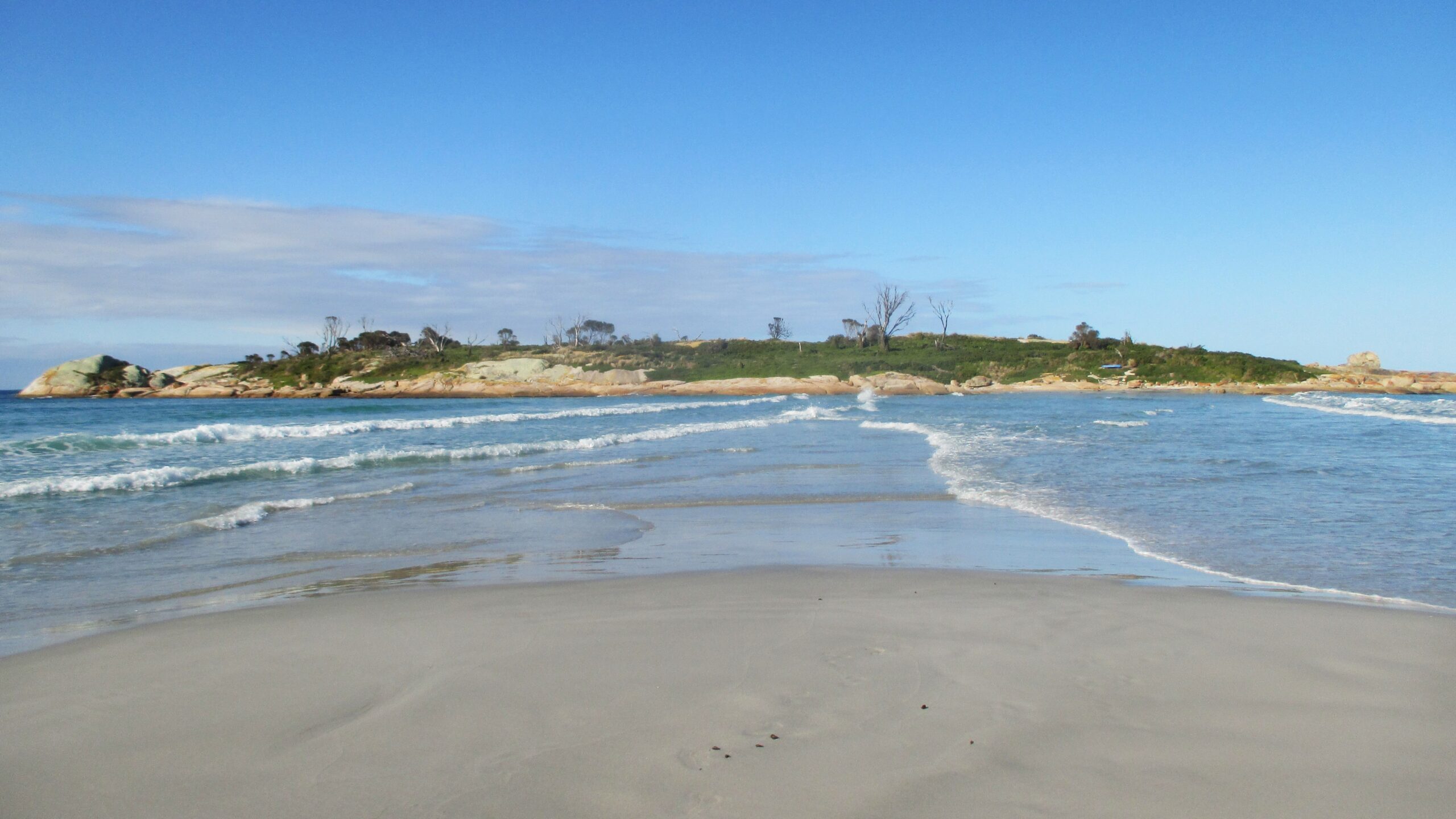
Freycinet
I continued south to another National Park in the East, Freycinet. There is a selection of shorter and long walks to choose from, and you could easily spend a week here, with plenty of activities to partake in. I had limited options, due to lacking my own transport, so I chose the walk that supposedly offers the best view in the area.
I wasn’t disappointed, as I had a postcard-worthy panoramic view of Wineglass Bay; a curved bay on a narrow stretch of the peninsula, surrounded by a forest that rises into the hills beyond.
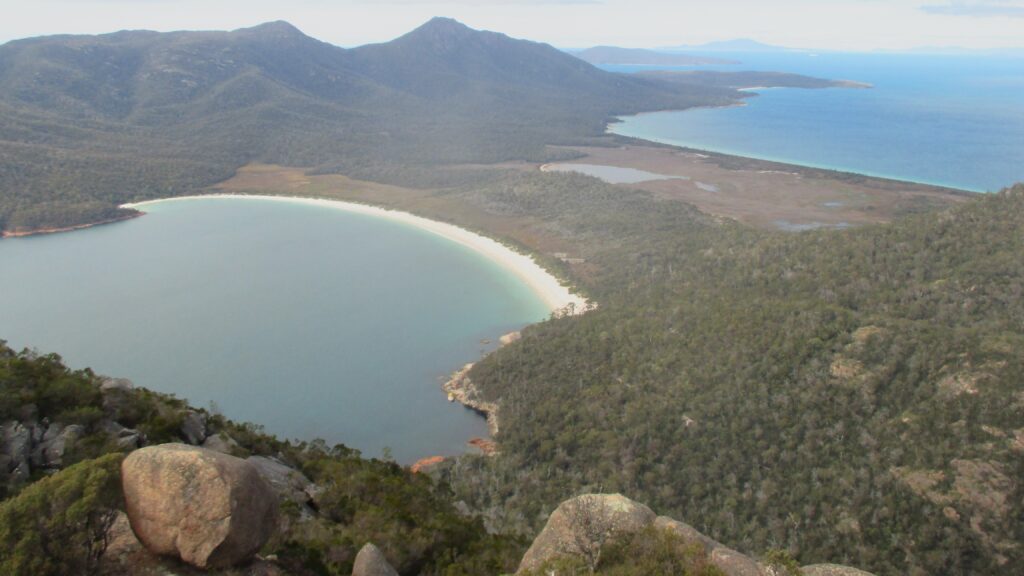
Maria Island
My next location had an unusual past. Historically, Maria Island hosted convict settlements. Nowadays, you can rent one of those cells for a night, as I did. It’s a short ferry ride over from the mainland to what is now a National Park of rugged terrain and dramatic cliffs hills. The island has fantastic walking territory and great wildlife. Notably, it has seen the reintroduction of the endangered Tasmanian devil and now supports a thriving population. On a late afternoon stroll to the undeveloped part of the island, I encountered a wisdom of wombats happily grazing away.
I had expected a quiet night, but it was surprisingly, and worryingly, eventful, when the fire alarm went off. A fellow guest left the woodfire in their cell unattended and almost burnt down the accommodation. Thankfully the park ranger reacted quickly to put the fire out.
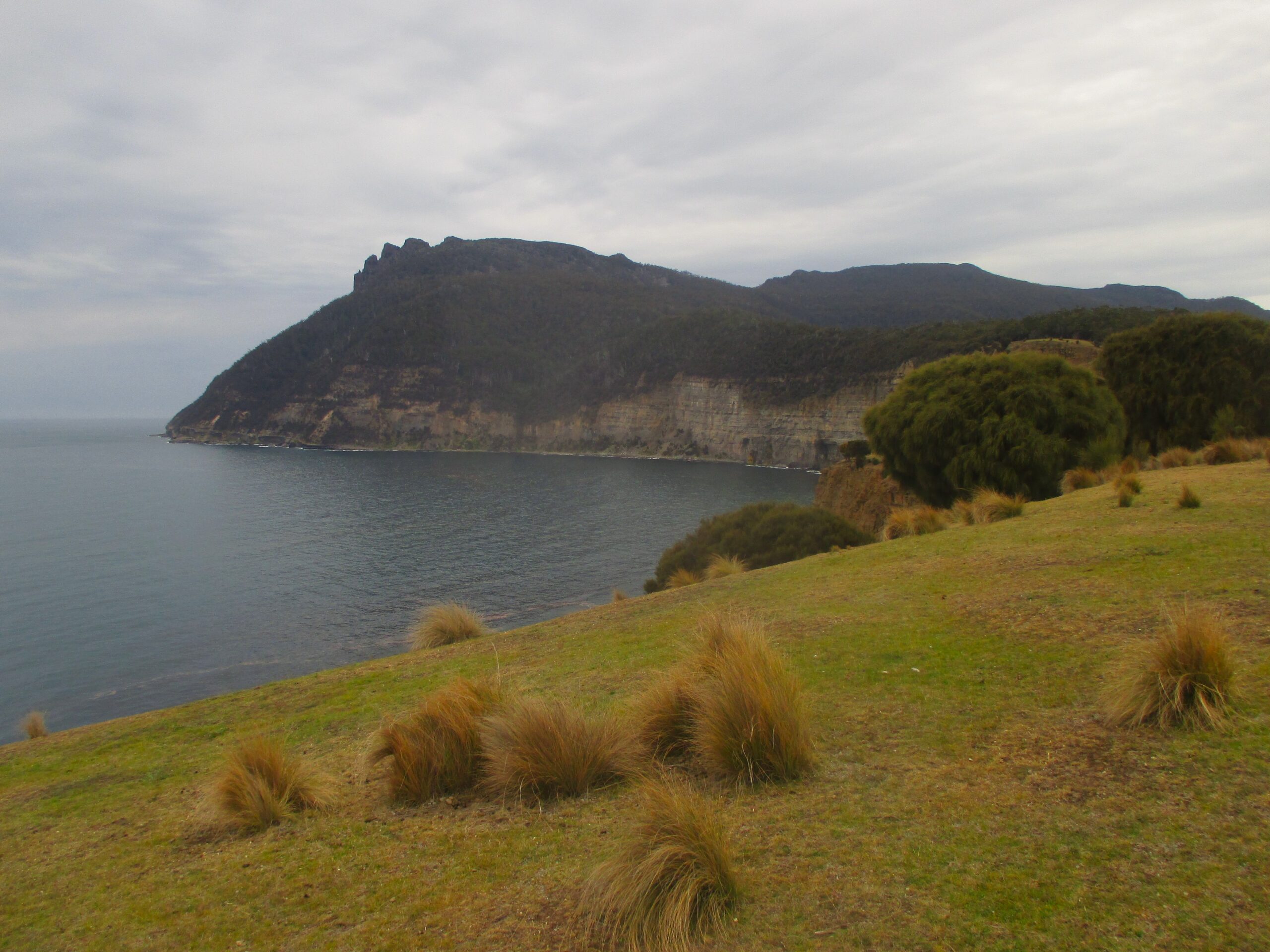
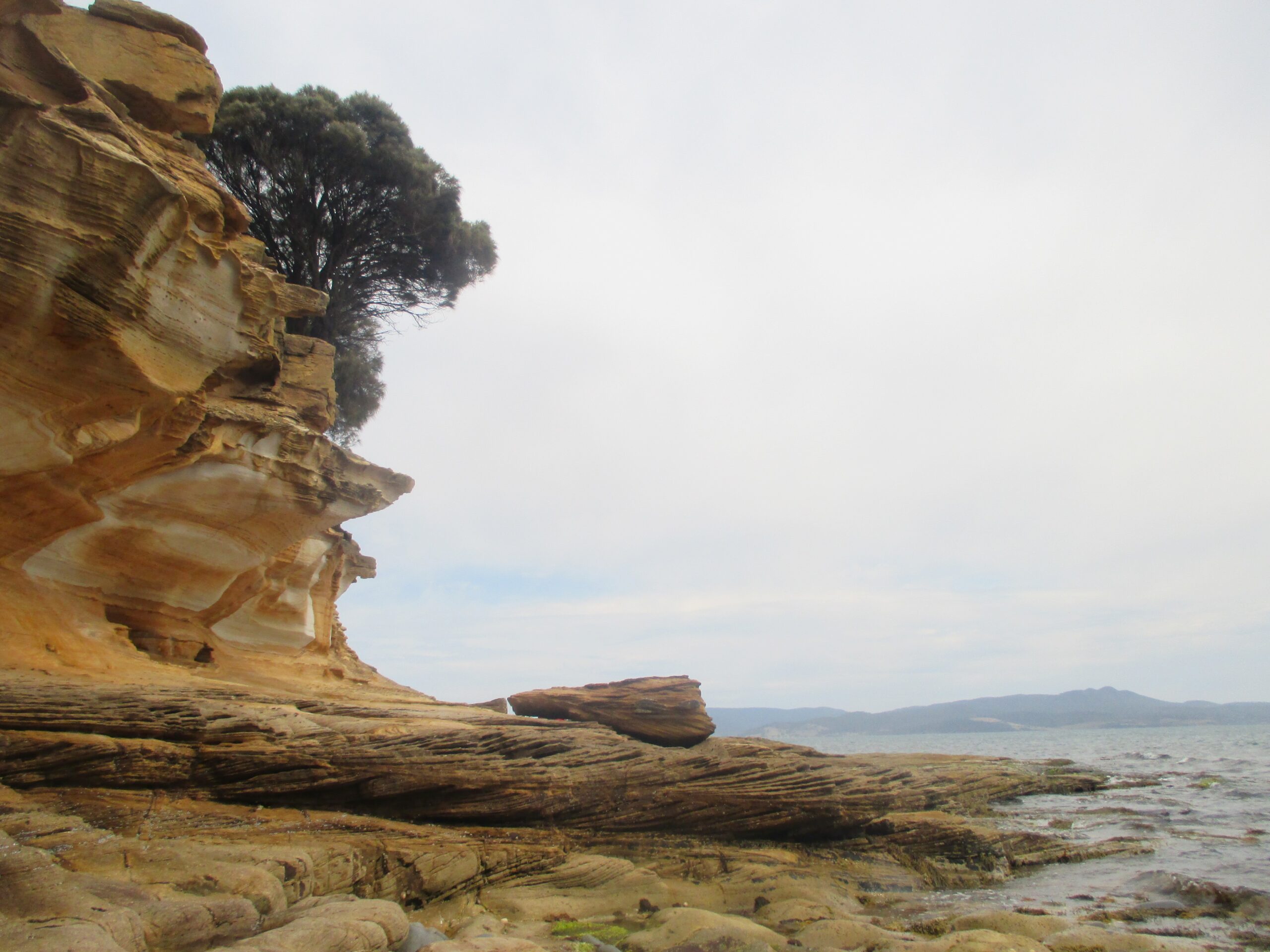
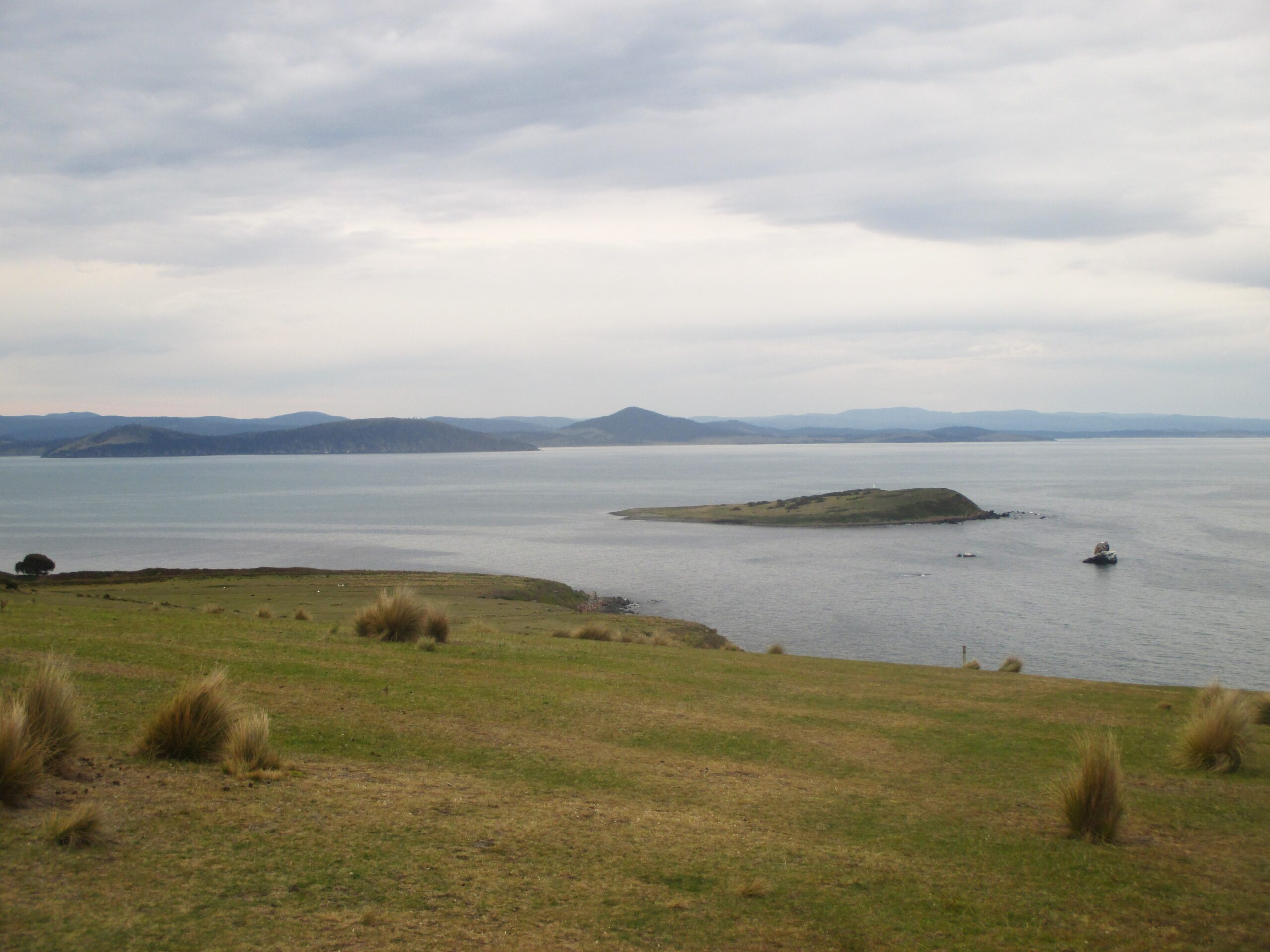
Tasman National Park
After ferrying back to the mainland, I was lucky to get a couple of pleasant rides through a sparsely populated area further south. To my great appreciation, the last ride of the day, from a member of the Mormon Church, went out of his way to drive me all the way into the campsite at Tasman National Park, to ensure I made it there before nightfall.
Tasmania continued to unveil spectacular scenery here. The campsite was in the midst of giant gum trees, at the mouth of a deep bay. As is common when in remote areas, I got chatting to fellow campers, and we decided to huddle around one campfire for the evening. An over-friendly wallaby also joined us.
In the morning, we took the trail around the coast to Cape Hauy, for an enthralling view down to the sea from the steep cliffs.

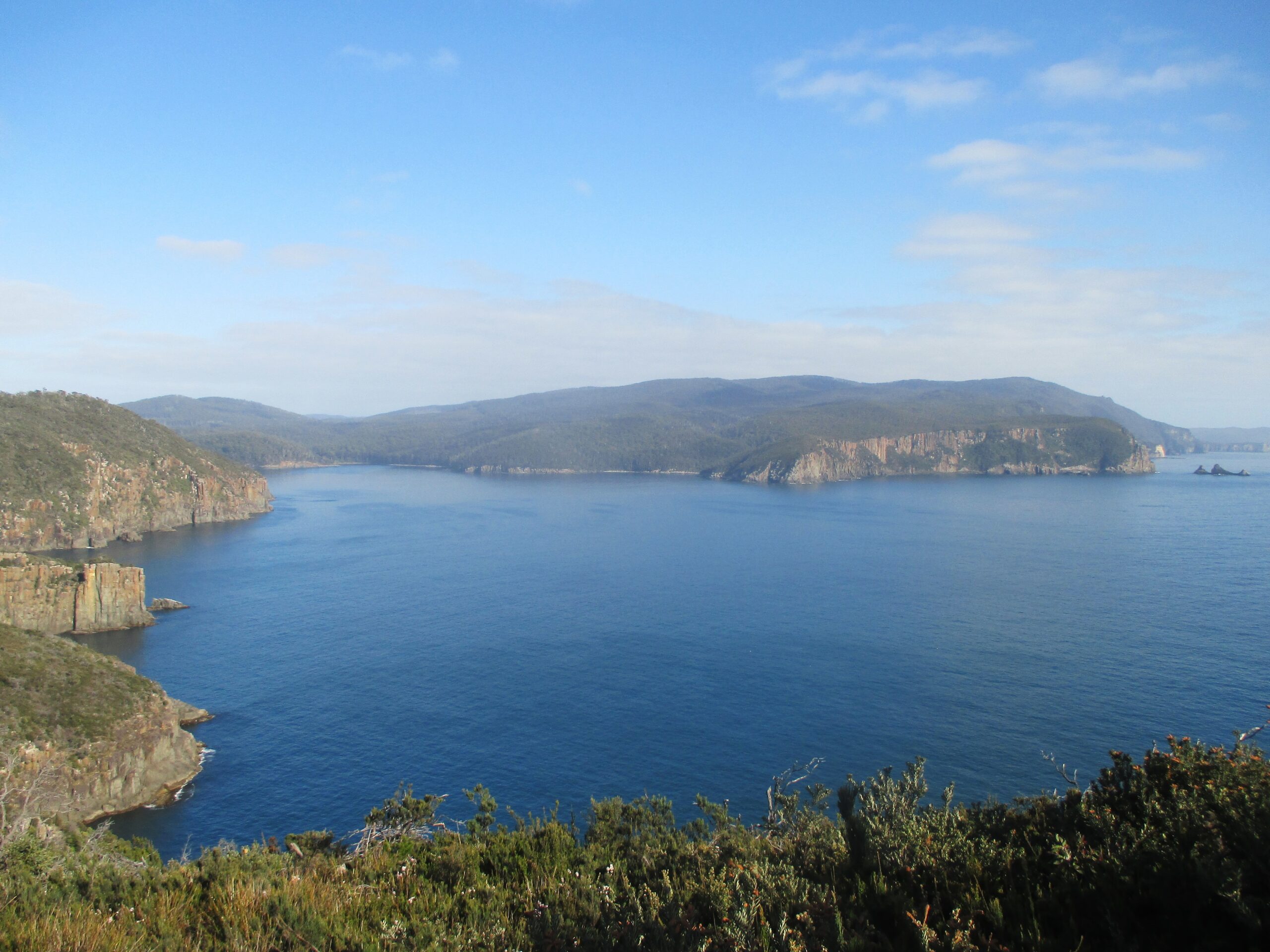

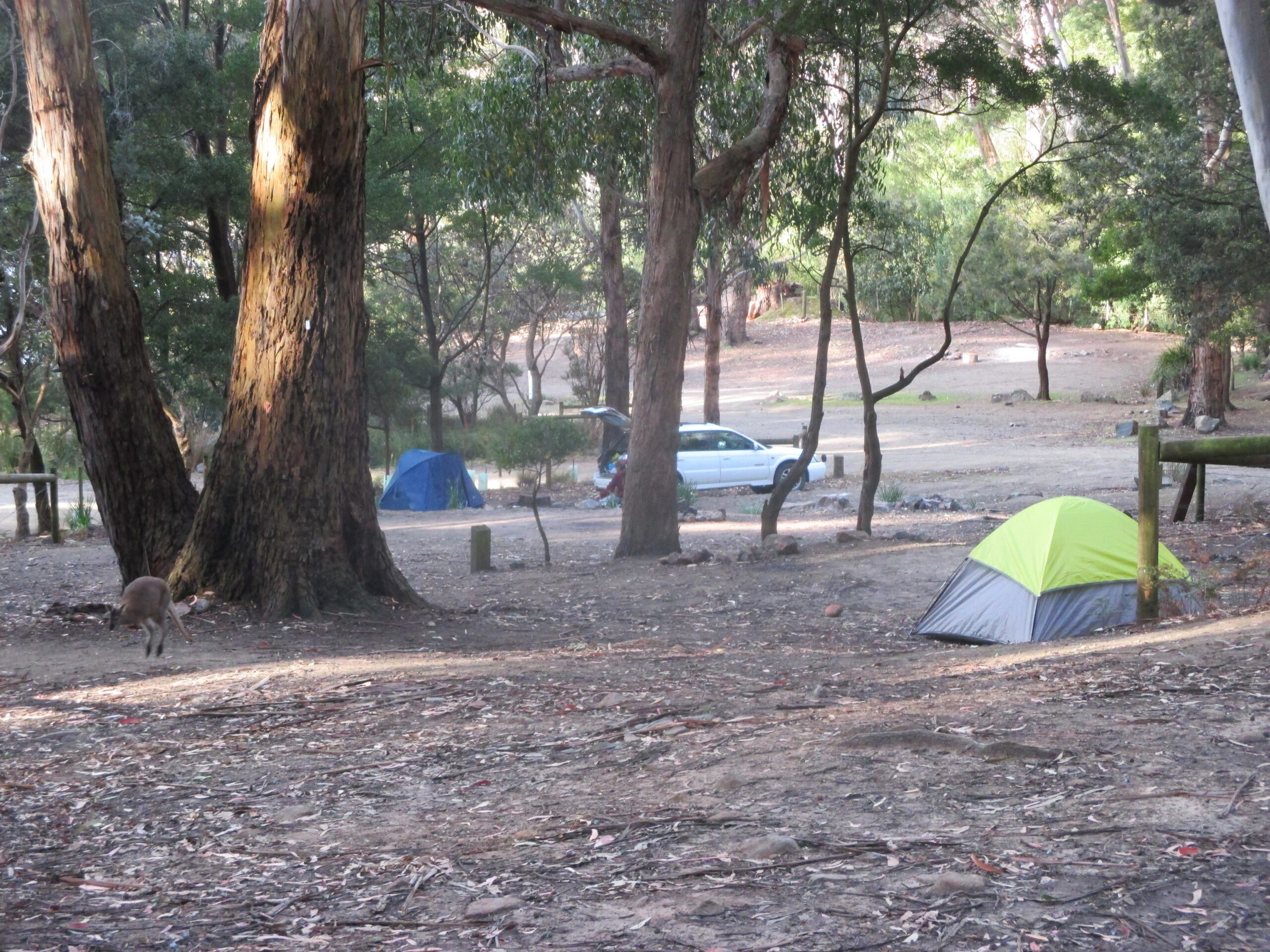
Roy
One of the travellers I met in Tasman, Roy, deserves a special mention. He generously invited me to join him on his tour of Tasmania, where he was enjoying a few days exploring before a marathon bike race. So, for a few days, we journeyed together. Our first port of call was Port Arthur, the former convict settlement. There was a hefty entrance fee, and as we only wanted a quick peek, we didn’t feel it was worth it. So, we snuck into to take a very swift look – I felt bad for sneaking in without paying, but, when in Rome.
We also stayed a night in a hostel in Hobart where I contemplated starting my search for work. Instead, the offer of a few more days travel with Roy was too tempting. We made it to Bruny Island, another gem of Tasmania. Roy navigated his four-wheeler across the beach to the campsite at Cloudy Corner where we pitched our tents and ate around a campfire in another remote corner of the island.



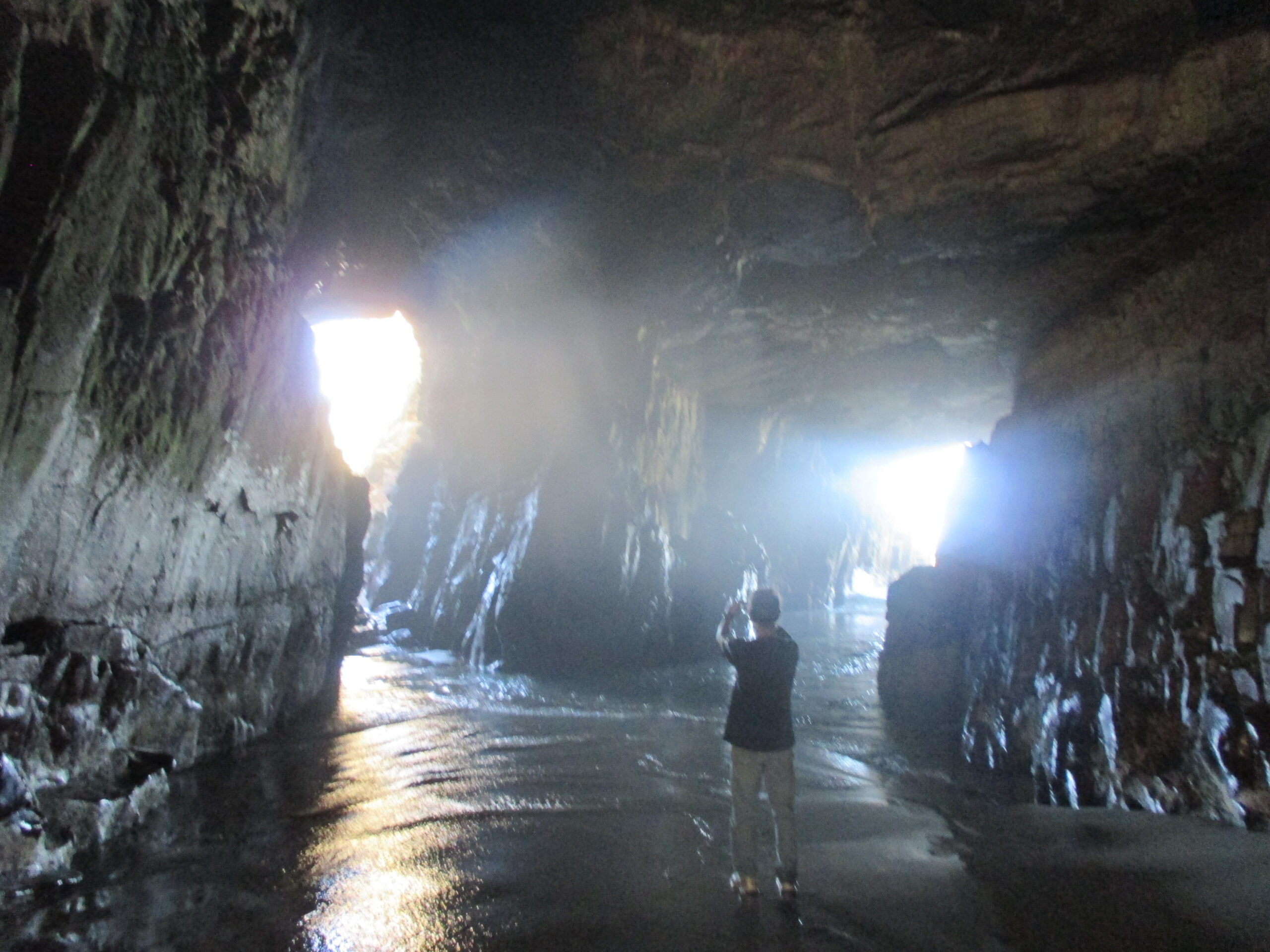

More national parks
The next day we went up to Hartz Mountains National Park. This displayed another aspect of Tasmania’s beauty – mountains. While Hartz Mountains can’t rival the world’s tallest peaks, they stood in stark contrast to the coastline I had seen so far. The elevation also meant it felt much cooler. We marched along a moderate hiking trail past a lake and a waterfall.
Roy drove us back to Hobart before we went our separate ways. And with a fond farewell, I was back to hitching rides. The next day, a short ride took me to Mount Field National Park. Attractions here include giant eucalyptus trees, glow worms that light up the grotto at night, and a multi-layered waterfall – unfortunately, it had a small volume of water flowing when I visited.
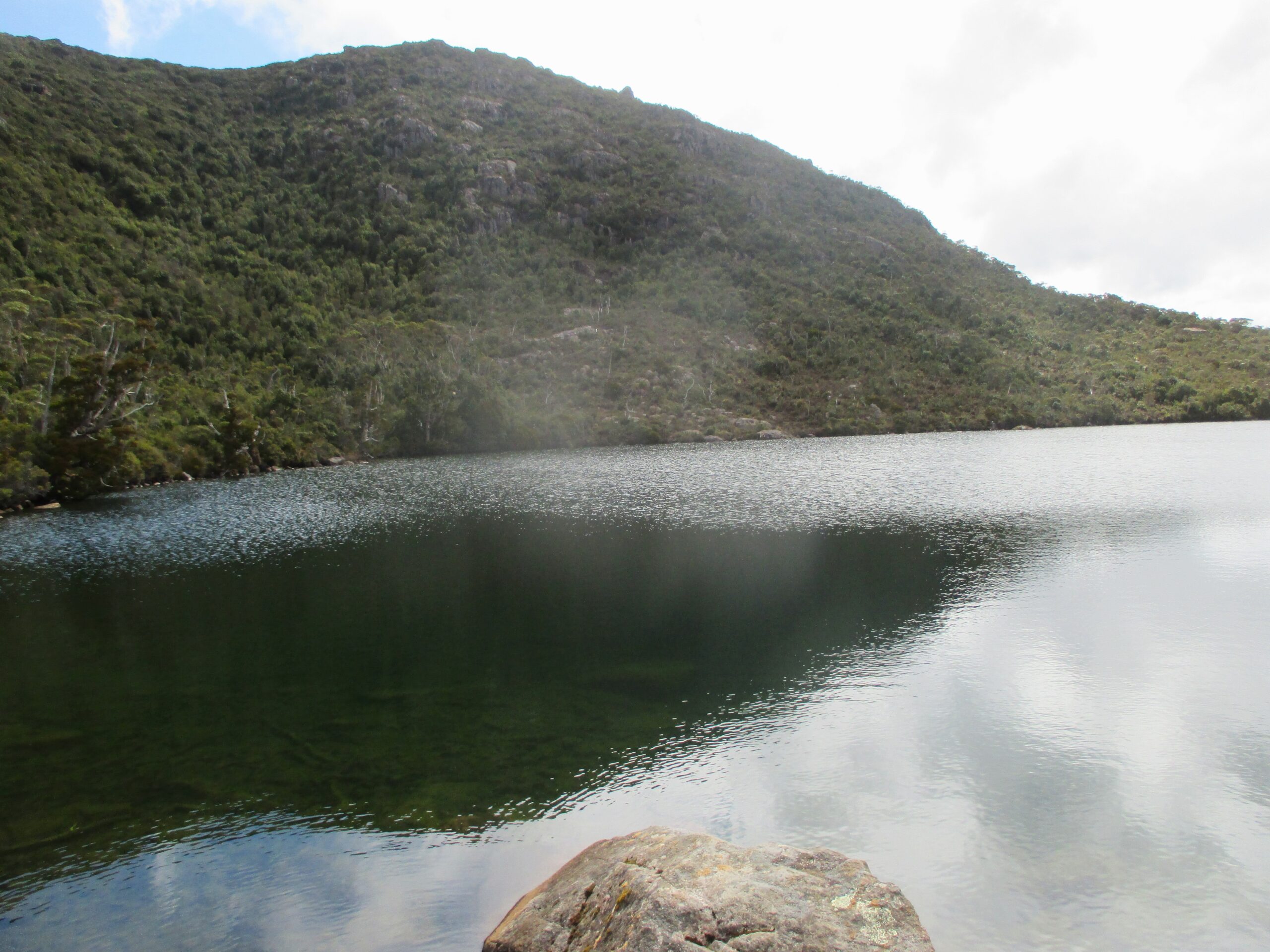
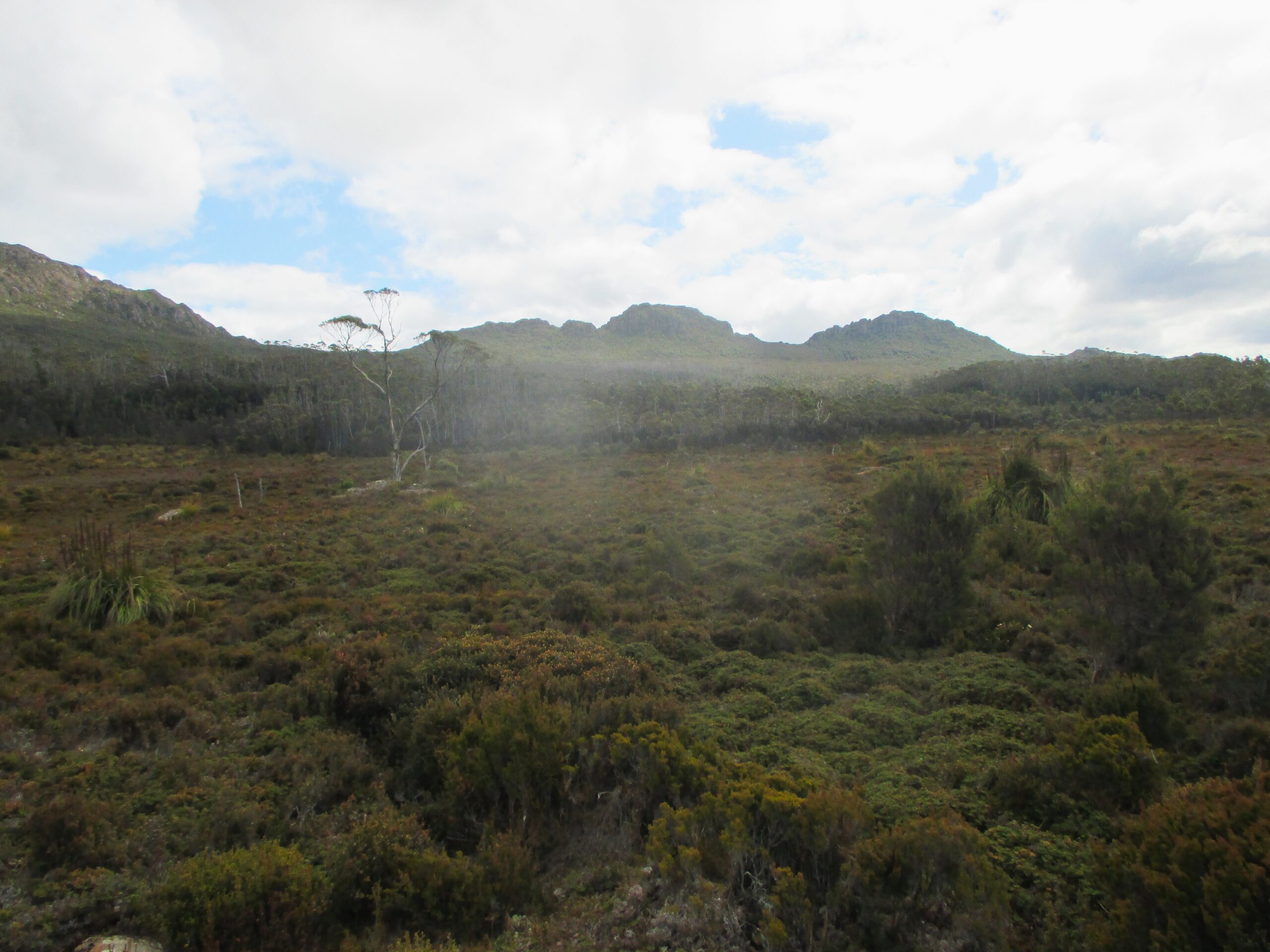

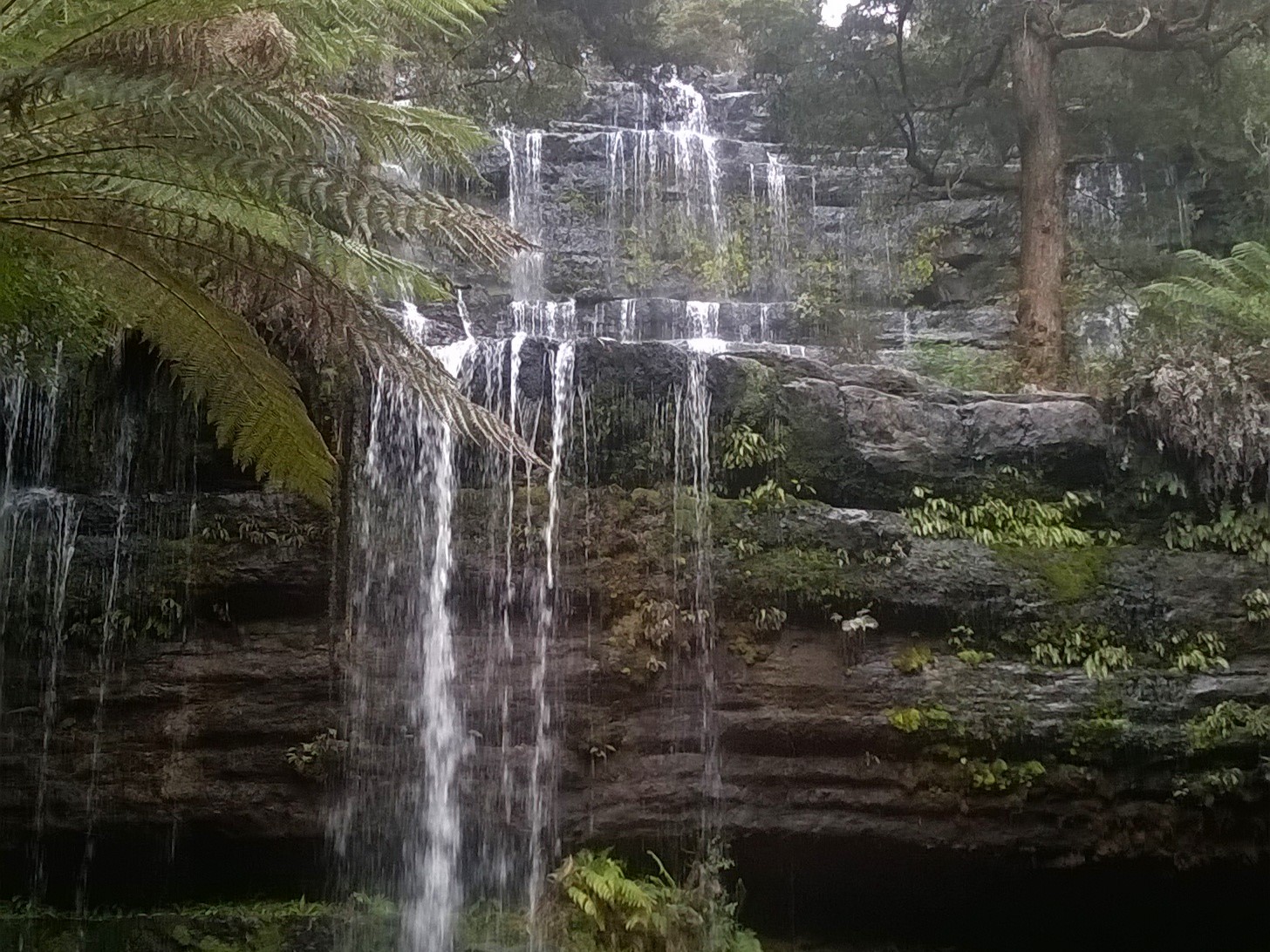
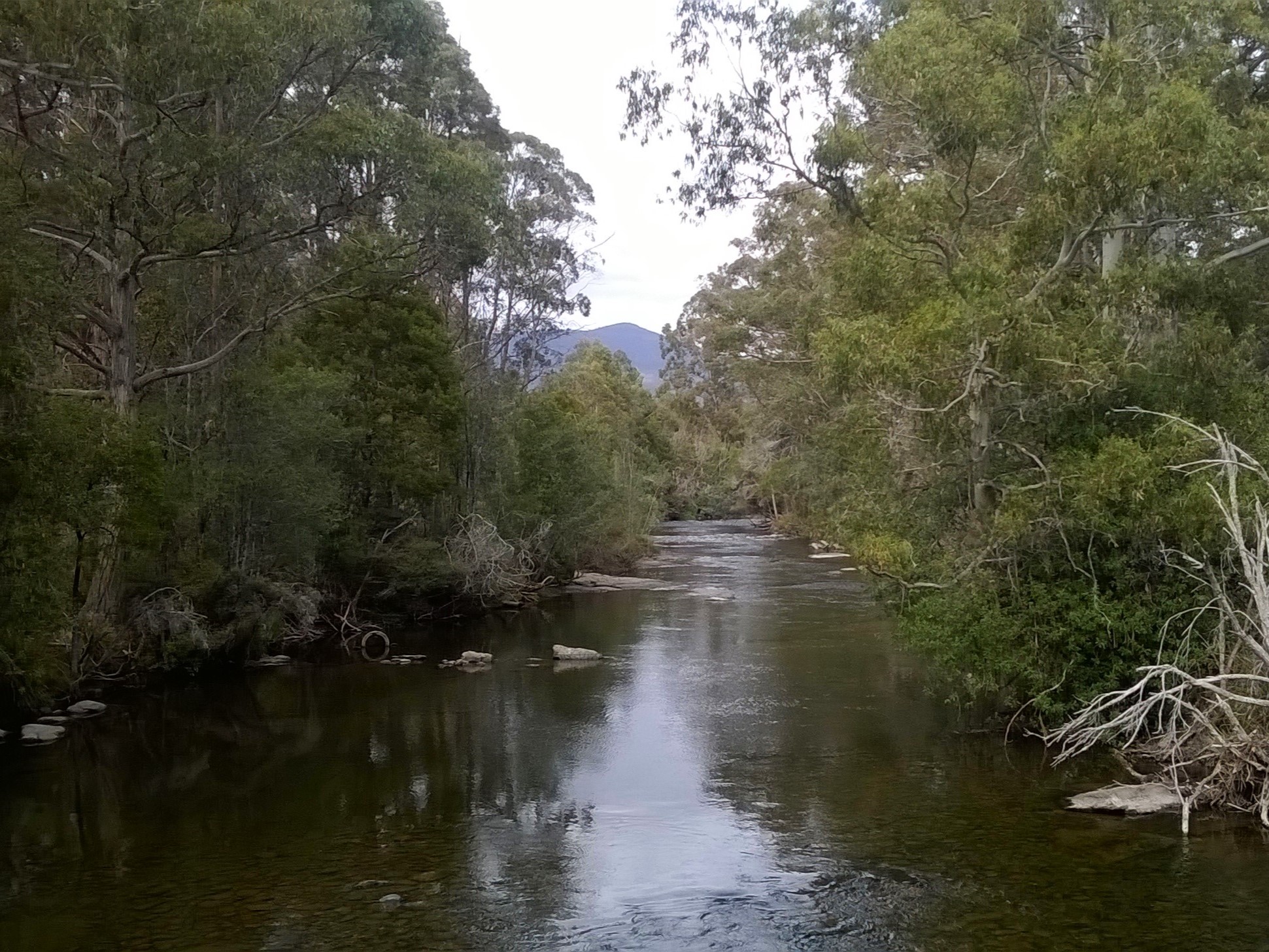
Southwest National Park
The most epic visit of this trip was to vast Southwest National Park. There’s a single main road that takes visitors in and out of the park. The small campsite is on the shores of a huge lake, with mountains on either side. There are opportunities for
Because of the untouched and remote nature of the area, it’s considered the final remaining of wilderness in Tasmania. Incidentally, there are rumours it remains a refuge to the ‘extinct’ Tasman Tiger. While much scepticism surrounds that claim, the fact it’s considered a possibility demonstrates the enormity and mystery of the park.

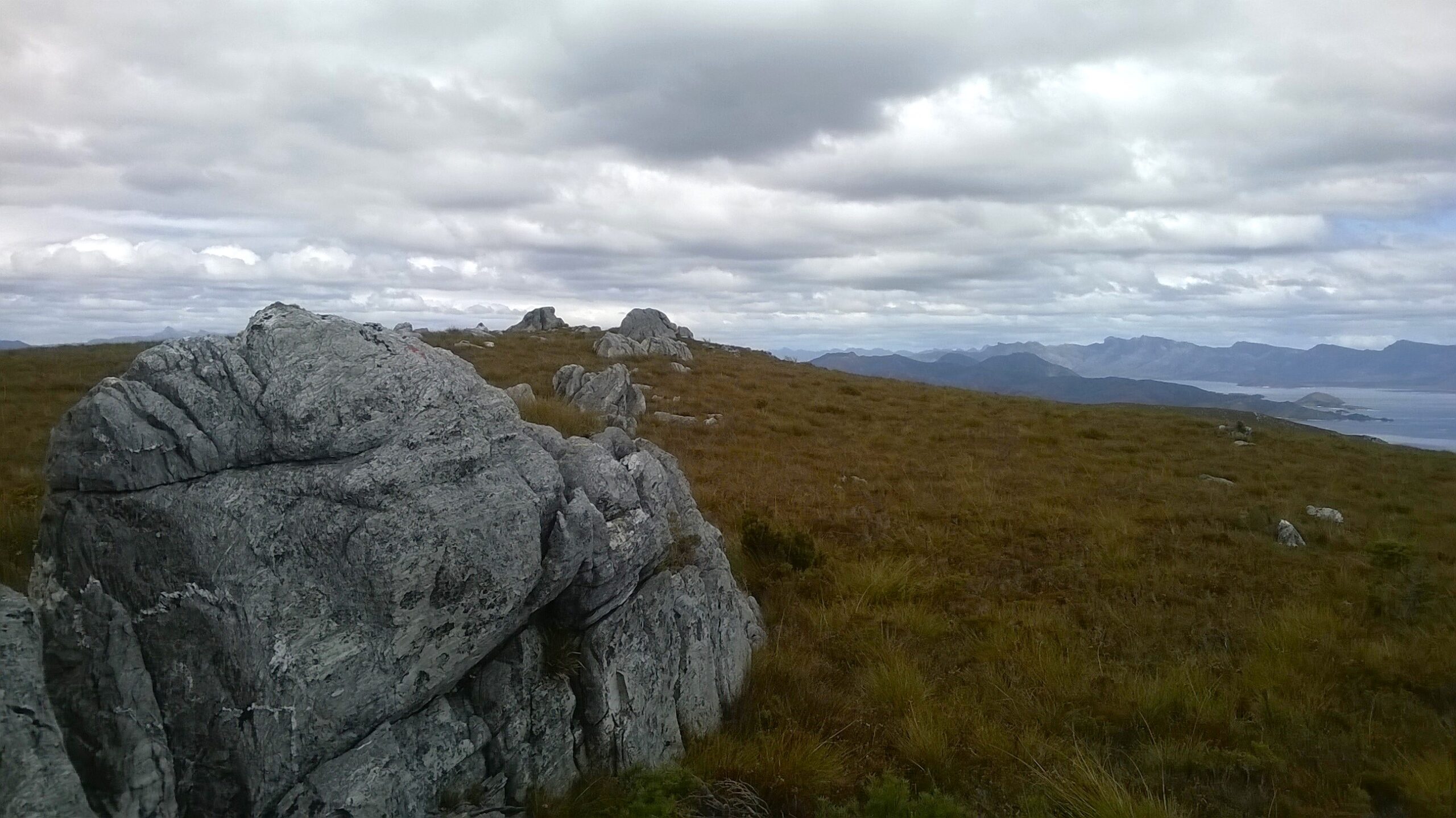

Coming to an end
The last leg of my Tasmanian tour took me to the north coast, to Burnie and Stanley, with more fantastic coastline on show, though with greater urbanisation. I had now been in Tasmania for two weeks and I had slept in my tent most nights. So, when in those towns, I again treated myself to hostels for two nights, as my trip neared its conclusion.
I was running short on cash, so I decided to attempt to make it to one of Tasmania’s best known National Parks; Cradle Mountain-Lake St Clair. I hitched a ride with a lady in her sixties who may well have been living my dream – travelling around in a campervan she had converted herself. In the park, on the edge of the lake, I saw snow atop the mountain – the first and only time in my 14 months in Australia.

Birthday
The day I woke up in Cradle Mountain was my birthday – and I spent it by making my way out of the park and towards Hobart airport, to bring an end to a special adventure.
As fate would have it, on the drive out with otherwise lovely overseas visitors, we survived a near-miss on the road. Unfortunately, the driver either didn’t know of, or missed, a road sign that required him to give way to other vehicles at a junction. He drove in front of another car that was coming at speed. Before I could call out, the other driver – fortunately – took evasive action and swerved away from us. The other driver stopped to complain about our driver, but I was just happy to be alive.
The three weeks in Tasmania were as eventful as they were enjoyable, with plenty of unexpected yet welcome experiences along the way. I have taken time to look back on the trip and what it meant – and still means – for me.
